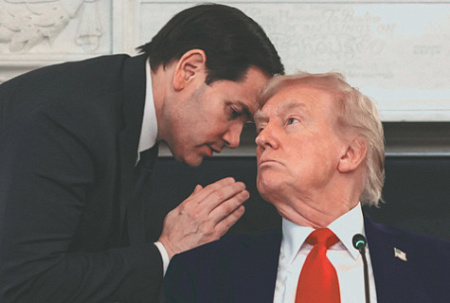
A flurry of reports has recently surfaced in Western media, citing anonymous sources, detailing an alleged high-level plan originating from within the White House administration, purportedly aimed at bringing an end to the protracted conflict between Russia and Ukraine. These purported proposals, while not officially confirmed by any party, have ignited intense international speculation and elicited cautious, often critical, reactions from key global actors.
Neither Donald Trump’s inner circle nor the Kremlin has directly acknowledged the plan’s existence, instead offering non-committal statements. European Union officials, however, have voiced measured criticism, primarily questioning the veracity and contents of a plan they concede to have not yet seen. The initial wave of reporting on this alleged framework, which reportedly encompasses 28 distinct proposals for ending the bloodshed, stemmed from authoritative American and British outlets, with the online news portal Axios notably among the first. Axios is known for its strong sources within Washington circles, though it is sometimes viewed by Trump supporters as aligned with the Democratic Party, adding a layer of political complexity to the narrative.
Based on these media leaks, the purported peace framework suggests a multifaceted approach to de-escalation that appears heavily skewed. It outlines that Russian forces would halt their current advances and withdraw from a “small portion” of currently occupied territories. Furthermore, the legal recognition of Russia’s annexation of Donbas and Crimea would be sought from “some countries,” explicitly excluding Ukraine itself. Under this scenario, Kyiv would be pressed to accept a moratorium on NATO membership for several years, significantly reduce its armed forces, elevate Russian to a second state language, and cease any perceived persecution of the Ukrainian Orthodox Church (Moscow Patriarchate).
The plan reportedly also stipulates a curtailment of Western military aid to Ukraine and a lifting of sanctions against Russia. Certain areas within Donbas would be designated as demilitarized zones. In return, Russia would purportedly commit to refraining from future attacks on Ukraine and other nations, along with paying an unspecified sum to Kyiv, which one British newspaper source termed “rent” for Donbas. Crucially, the leaked details offer little clarity on how these complex conditions would be effectively monitored or enforced, a stark contrast to existing security concepts such as the “Coalition of the Willing” – an alliance envisioned to deploy troops to Ukraine post-ceasefire to stabilize peace.
From the American side, officials offered nuanced responses. A prominent figure associated with the Trump camp, U.S. Senator Marco Rubio, in a social media post, acknowledged that resolving such a formidable conflict necessitates “a broad exchange of serious and realistic ideas.” He reiterated a previous stance that “lasting peace will require difficult but necessary concessions from both sides,” concluding that the administration is “continuing to develop a list of possible ideas” based on proposals from both belligerents. This suggests an exploratory, rather than definitive, stage. Special Representative of the President, Steve Whitcoff, also briefly posited in a since-deleted social media message that an individual identified only as “K” might have leaked the plan to the press, adding another layer of intrigue to the unfolding narrative.
Upon closer examination, the alleged proposals, as reported in Western media, raise considerable questions and highlight apparent inconsistencies. Observers note a significant imbalance, with Ukraine seemingly expected to make far more extensive concessions than Russia. These terms bear a striking resemblance to Russia’s earlier proposals during negotiations in Istanbul, which Kyiv had previously deemed unacceptable. Furthermore, such a plan appears to be at odds with recent actions attributed to the US administration on the Russia-Ukraine front, including diplomatic pressure on India regarding Russian oil imports, the approval of tariffs targeting countries purchasing Russian energy resources, and continued arms shipments to Ukraine. This discrepancy suggests either a complex, dual-track strategy or that the rumored plan represents an unofficial, possibly exploratory, initiative.
The proposed plan has also generated significant apprehension among European allies. During a recent meeting, EU foreign ministers offered diplomatic but pointed comments, uniformly emphasizing that “nothing about Ukraine without Ukraine.” Finland’s Foreign Minister, Elina Valtonen, was particularly vocal, stating the plan “looks like it was written in Moscow.” However, many high-ranking European officials reserved full judgment, citing a lack of concrete information.
Should the details of the Trump plan prove accurate, it represents a high-stakes political maneuver for the US President. The timing is particularly noteworthy, coinciding with the declassification of documents related to Jeffrey Epstein, a domestically sensitive issue that has dominated American headlines. Amid discussions that the President, compelled to release the “Epstein files,” might be facing political peril, appearing “soft on Moscow” could further complicate his standing. Indeed, domestic opposition, including Republican Congressman Don Bacon, has already used the alleged plan to criticize the President, accusing him of betraying national interests.
Meanwhile, Russian Telegram channels, closely monitoring these developments, offered their own interpretations. Commentators noted a perceived state of disarray within Ukraine, with officials allegedly fleeing and independent deputies calling for resignations, signaling a volatile political landscape. Another prominent channel highlighted the rumored resignation of Keith Kellogg, previously described as a pro-Kyiv voice within the Trump administration, interpreting it as a victory for “pragmatic peacemakers” over “hawks.” This narrative suggests an internal shift in US policy that could potentially lead to efforts to “compel Ukraine to peace.”
